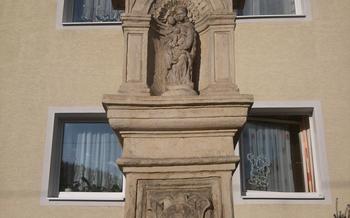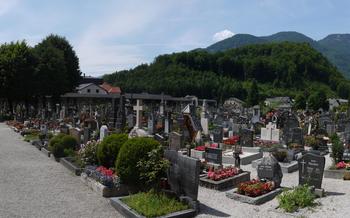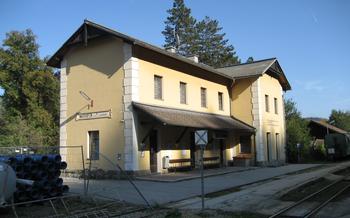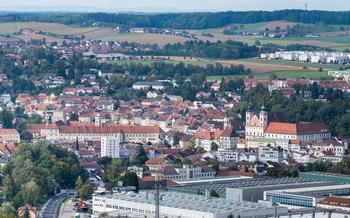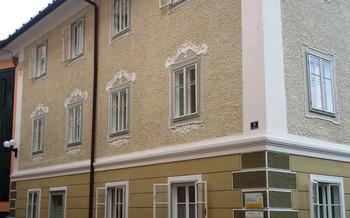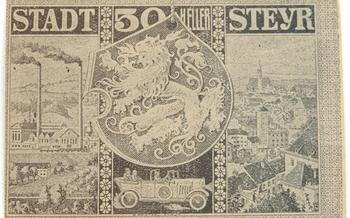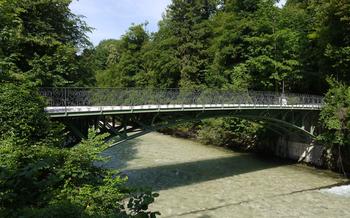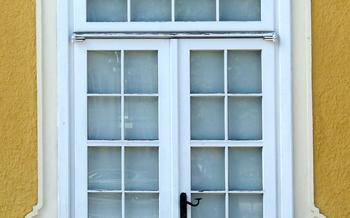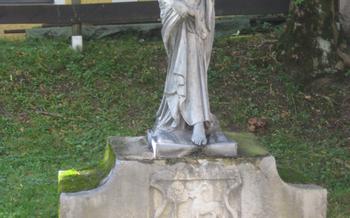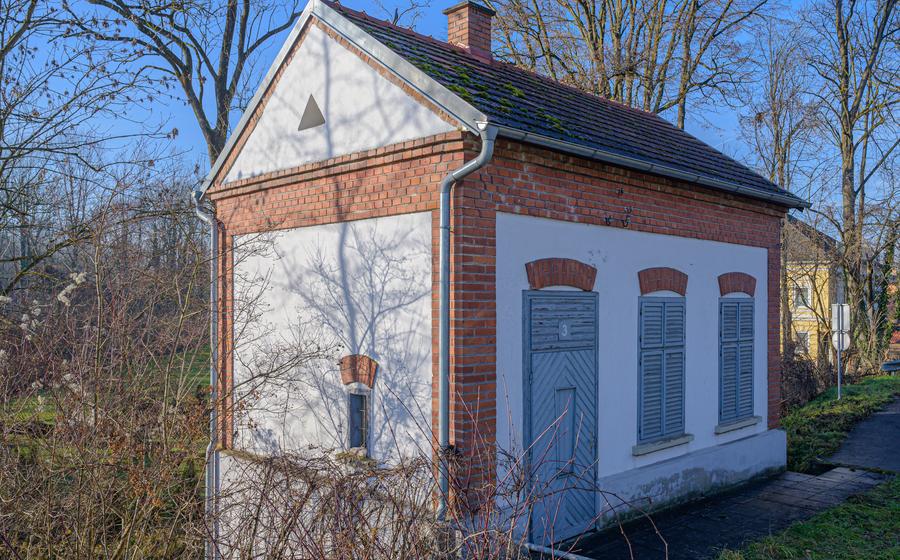
Hallstatt Museum
- Historical Background
- Hallstatt Museum: A Journey Through History and Culture
- Hallstatt Museum: Preserving the Past, Inspiring the Future
- Exhibits and Artifacts
- Salt Mining History
- Guided Tours
- Educational Programs
- Museum Shop
- Accessibility
- Location and Transportation
- Admission and Hours of Operation
- Visitor Tips
- Photography and Videography
- Sustainability and Environmental Responsibility
- Insider Tip: Unveiling the Secrets of the Skyphos
Historical Background
Hallstatt, a picturesque lakeside town in Austria, boasts a rich and fascinating history that dates back to the Iron Age. In the 19th century, the discovery of a vast prehistoric cemetery, known as the Hallstatt Necropolis, revolutionized our understanding of ancient European cultures. The site yielded an extraordinary collection of artifacts, including weapons, jewelry, and pottery, providing a glimpse into the lives of the Hallstatt people, a Celtic tribe that inhabited the region from around 800 BC to 400 BC.
The Hallstatt salt mines, located in the surrounding mountains, played a crucial role in the town's development. The extraction of salt, a valuable commodity in ancient times, brought wealth and prosperity to the region. Hallstatt became a significant trading hub, with its salt being transported along ancient trade routes throughout Europe. The town's strategic location on these routes further contributed to its economic and cultural importance.
In recognition of its exceptional cultural heritage, Hallstatt was designated a UNESCO World Heritage Site in 199This prestigious designation highlights the town's outstanding universal value and its contribution to our understanding of human history and cultural diversity.
Hallstatt Museum: A Journey Through History and Culture
Hallstatt Museum: Preserving the Past, Inspiring the Future
Nestled in the heart of the picturesque town of Hallstatt, the Hallstatt Museum stands as a testament to the region's rich history and cultural heritage. Established in 1884, the museum has played a pivotal role in preserving and showcasing the archaeological treasures discovered in and around Hallstatt, providing visitors with a unique opportunity to delve into the captivating past of this ancient Celtic settlement.
The Hallstatt Museum's collection is a diverse tapestry of artifacts that span various periods, from the prehistoric era to the Roman Empire. Among its highlights is the world-renowned Skyphos of Hallstatt, an exquisitely crafted drinking vessel that dates back to the 6th century BC. This iconic artifact, adorned with intricate scenes of everyday life, offers a glimpse into the artistry and craftsmanship of the Hallstatt people.
Beyond the Skyphos, the museum houses an impressive array of prehistoric tools, weapons, and jewelry, providing insights into the lives and customs of the region's earliest inhabitants. The museum's archaeological research has been instrumental in shedding light on the development of Hallstatt's unique culture, making it a valuable resource for scholars and history enthusiasts alike.
Exhibits and Artifacts
The Hallstatt Museum boasts a remarkable collection of artifacts that provide a glimpse into the lives and customs of the ancient Hallstatt people. Among the highlights is the world-renowned Skyphos of Hallstatt, a finely crafted drinking vessel dating back to the 6th century BC. This exquisite artifact is adorned with intricate engravings depicting scenes from Greek mythology, showcasing the cultural influences that reached Hallstatt during the Iron Age.
The museum also houses a collection of prehistoric tools, weapons, and jewelry, offering insights into the region's earliest inhabitants. These artifacts, crafted from materials such as bone, stone, and bronze, demonstrate the ingenuity and craftsmanship of the Hallstatt people. Visitors can marvel at arrowheads, axes, and chisels, as well as bronze bracelets, necklaces, and earrings, gaining a deeper understanding of their daily lives and technological advancements.
Furthermore, the museum's archaeological research plays a crucial role in expanding our knowledge of Hallstatt's past. Through ongoing excavations and studies, new artifacts and insights are continuously unearthed, contributing to a richer understanding of the region's cultural heritage. Visitors to the museum can learn about the latest discoveries and research findings, gaining a deeper appreciation for the significance of Hallstatt's history.
Salt Mining History
The history of salt mining in Hallstatt is a tale of ingenuity, perseverance, and the pursuit of a precious resource. Since prehistoric times, the people of Hallstatt have harnessed the earth's bounty, extracting salt from the depths of the mountains that surround their picturesque town. Salt, a vital commodity in ancient societies, was not merely a seasoning but a symbol of wealth and prosperity.
In Hallstatt, the salt mines were a lifeline, shaping the town's economy and culture. The miners, skilled and courageous, ventured deep into the subterranean labyrinth, armed with simple wooden tools and sheer determination. They carved out tunnels, following the veins of salt, and brought forth the glistening crystals that would change the course of Hallstatt's history.
The methods employed by these early miners were a testament to their resourcefulness. With picks and shovels, they chipped away at the rock, creating intricate networks of tunnels that stretched for miles beneath the surface. The salt was then transported to the surface in wicker baskets, carried on the backs of sturdy miners.
The salt mining industry in Hallstatt not only brought economic prosperity but also fostered a unique mining culture. The miners developed their own customs, traditions, and even a distinct dialect, a testament to the deep bond they shared. Their lives were intertwined with the salt mines, and their stories echoed through the generations, shaping the identity of Hallstatt.
Guided Tours
To delve deeper into the captivating history of Hallstatt and its museum, guided tours are highly recommended. Led by knowledgeable and passionate experts, these tours provide an immersive experience that brings the exhibits to life. Learn about the significance of the Skyphos of Hallstatt, discover the secrets of the ancient salt mines, and gain insights into the unique traditions and culture of the Hallstatt people.
Guided tours are available in a variety of formats to suit different interests and preferences. General tours offer a comprehensive overview of the museum's highlights, while thematic tours focus on specific aspects of Hallstatt's history, such as its Celtic heritage or salt mining industry. Private tours are ideal for groups or individuals seeking a more personalized and in-depth experience.
To book a guided tour, visitors can contact the Hallstatt Museum directly or through authorized tour operators. Advance reservations are recommended, especially during peak tourist season, to secure a spot and avoid disappointment. Prices vary depending on the type of tour and group size, but typically range from 5 to 20 euros per person.
Whether you're a history buff, a culture enthusiast, or simply curious to learn more about this remarkable town, a guided tour of the Hallstatt Museum is an experience you won't want to miss.
Educational Programs
The Hallstatt Museum offers a diverse range of educational programs designed to engage visitors of all ages, especially school groups and families. These programs provide an interactive and hands-on approach to learning about Hallstatt's history and culture.
The museum's educational workshops are a highlight, allowing participants to experience the ancient crafts and traditions of the Hallstatt people firsthand. Visitors can learn how to make prehistoric tools, weave textiles, or create jewelry using traditional techniques. These workshops are led by experienced educators who provide expert guidance and ensure a fun and educational experience for all.
In addition to workshops, the museum offers a variety of interactive exhibits and activities that make learning about Hallstatt's past enjoyable and engaging. Visitors can explore hands-on displays, play educational games, and solve puzzles related to the museum's collection. These interactive elements help bring Hallstatt's history to life, making it accessible and memorable for visitors of all ages.
The Hallstatt Museum also collaborates with local schools and institutions to develop educational programs tailored to different age groups and curriculum needs. These programs aim to integrate the museum's resources into the classroom, providing students with unique learning opportunities and fostering a deeper appreciation for their local heritage.
The museum's outreach programs extend beyond its walls, with lectures, exhibitions, and community events that promote cultural awareness and education. These events provide opportunities for the museum to engage with the local community and share its knowledge and expertise with a broader audience.
Through its educational programs and outreach initiatives, the Hallstatt Museum plays a vital role in preserving and promoting the cultural heritage of Hallstatt, ensuring that future generations can continue to learn about and appreciate the region's rich history.
Museum Shop
The Hallstatt Museum's gift shop is a treasure trove of unique souvenirs, educational materials, and locally crafted items that celebrate the museum's collection and the town's rich history. Visitors can browse a diverse selection of books, postcards, and replicas of artifacts, allowing them to take a piece of Hallstatt home with them. The shop also features a variety of locally made crafts, providing an opportunity to support local artisans and craftspeople while finding meaningful mementos of their visit.
By purchasing items from the museum shop, visitors not only support the museum's educational mission but also contribute to the preservation of Hallstatt's cultural heritage. The revenue generated from the shop helps fund ongoing research, exhibitions, and educational programs, ensuring that the museum can continue to share Hallstatt's stories with visitors from around the world.
Accessibility
The Hallstatt Museum is committed to providing an accessible and inclusive environment for all visitors, regardless of their abilities or disabilities. The museum features a range of accessibility features to ensure that everyone can enjoy its exhibitions and programs.
Ramps and elevators are available throughout the museum, allowing visitors with mobility impairments to navigate the space with ease. Additionally, audio guides are provided for visitors with hearing impairments, allowing them to access the museum's content independently.
To accommodate international visitors, the museum offers educational materials and programs in multiple languages. This ensures that visitors from all over the world can learn about Hallstatt's history and culture in their preferred language.
Furthermore, the museum collaborates with local organizations to offer special programs and events for visitors with disabilities. These programs are designed to provide a welcoming and inclusive environment for all visitors to enjoy the museum's offerings.
Location and Transportation
The Hallstatt Museum is conveniently located in the heart of Hallstatt, a picturesque town nestled amidst the stunning Alpine scenery. To reach Hallstatt, visitors can take advantage of several transportation options. The town is well-connected by public transportation, with regular buses and trains running from nearby cities such as Salzburg and Vienna. For those traveling by car, Hallstatt is accessible via scenic mountain roads that offer breathtaking views along the way. Additionally, guided tours often include transportation to and from Hallstatt, providing a hassle-free option for visitors.
Once in Hallstatt, the museum is within easy walking distance from the town center. Visitors can stroll along the charming streets, admiring the traditional Alpine architecture and the stunning lake views, before arriving at the museum's entrance. The museum's proximity to other attractions in Hallstatt, such as the Hallstatt Skywalk and the Hallstatt Bone House, makes it easy to combine a visit to the museum with a comprehensive exploration of the town's rich history and culture.
Admission and Hours of Operation
To ensure a seamless visit, it's crucial to plan your trip to the Hallstatt Museum by considering admission fees and hours of operation. Regular admission fees vary for adults, children, and families, so checking the museum's website or contacting them directly for the most up-to-date information is recommended. The museum typically follows regular hours throughout the year, with extended hours during peak tourist season to accommodate the influx of visitors. Additionally, special hours may apply during holidays, so it's essential to plan accordingly. Keep an eye out for any discounts or promotions offered by the museum, such as group discounts or student discounts, which can help you save on admission costs. By planning ahead and being aware of admission fees and hours of operation, you can optimize your visit to the Hallstatt Museum and make the most of your time exploring its fascinating exhibits.
Visitor Tips
To make the most of your visit to the Hallstatt Museum, here are some practical tips:
-
Book your tickets in advance. Especially during the peak tourist season (June to September), it's advisable to reserve your tickets online or by phone to avoid long queues.
-
Plan enough time. Allow at least 1-2 hours to explore the museum's exhibits at a leisurely pace. If you're particularly interested in Hallstatt's history and culture, you may want to allocate even more time.
-
Take advantage of the audio guides. The museum offers audio guides in multiple languages, which provide insightful commentary on the exhibits. These guides are a great way to learn more about the history of Hallstatt and the significance of the artifacts on display.
-
Join a guided tour. Guided tours are available in English and German and offer a more in-depth exploration of the museum's collection. Tours typically last around 1 hour and are led by knowledgeable and enthusiastic experts who can provide additional insights and answer your questions.
-
Use the museum's educational resources. The Hallstatt Museum offers a range of educational materials, including books, brochures, and interactive exhibits, which can enhance your learning experience. Take advantage of these resources to gain a deeper understanding of Hallstatt's past.
Photography and Videography
The Hallstatt Museum welcomes photography and videography for personal use, allowing visitors to capture their memories and share their experiences with others. However, to ensure the preservation of the museum's collection and the comfort of other visitors, certain guidelines must be followed. Flash photography and the use of tripods or selfie sticks are prohibited within the museum to avoid damaging delicate artifacts or obstructing the views of other guests. Visitors are encouraged to be mindful and respectful of the museum's environment and exhibits while taking photos or videos. Sharing your experiences on social media is encouraged, and the museum appreciates being tagged and mentioned in posts. By using relevant hashtags, you can connect with other visitors and enthusiasts who share your passion for Hallstatt's history and culture.
Sustainability and Environmental Responsibility
The Hallstatt Museum is committed to sustainability and environmental responsibility, recognizing the importance of preserving both cultural heritage and the natural environment for future generations. The museum employs various measures to reduce its carbon footprint and promote environmental awareness. By using renewable energy sources, such as solar panels, and implementing energy-efficient practices, the museum minimizes its impact on the environment. Additionally, the museum's educational programs and exhibits highlight the importance of environmental protection and encourage visitors to adopt sustainable practices in their daily lives. The museum collaborates with local organizations to offer educational programs that focus on sustainability and environmental stewardship, inspiring visitors to make a positive impact on their communities and the planet.
Insider Tip: Unveiling the Secrets of the Skyphos
Among the treasures of the Hallstatt Museum, the Skyphos of Hallstatt stands out as a captivating artifact. This exquisitely crafted drinking vessel, dating back to the 6th century BC, is renowned for its intricate decorations and historical significance. The Skyphos features scenes from Greek mythology, depicting the adventures of Heracles and the labors he undertook.
This remarkable artifact offers a glimpse into the cultural exchange and artistic influences that shaped Hallstatt society. Its exquisite craftsmanship and detailed imagery provide valuable insights into the artistic traditions and beliefs of the ancient Hallstatt people.
Take a moment to admire the Skyphos of Hallstatt, marveling at its intricate design and the stories it silently conveys. Let this exceptional artifact transport you back in time, connecting you with the rich history and cultural heritage of Hallstatt.
